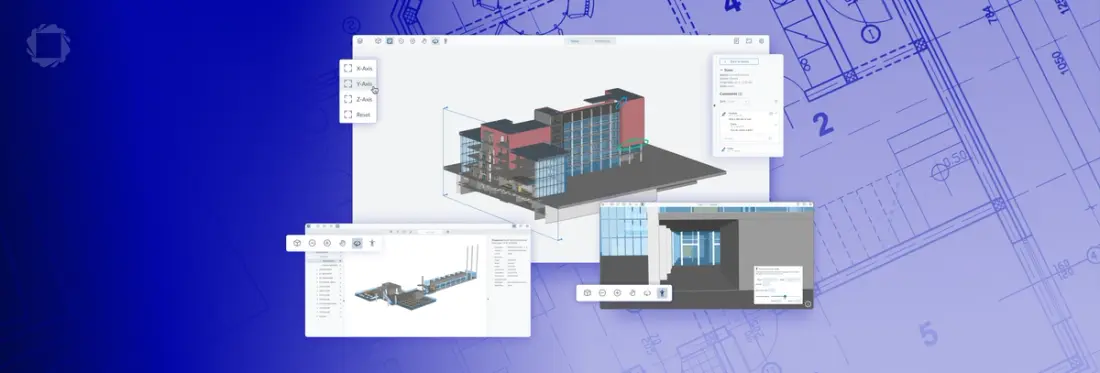How Document Generation Technology Helps Address AEC Talent Shortages
By Nikki Manthey | 2024 Feb 09

6 min
Tags
automated document generation
aec
PDF accessibility
Summary: The AEC sector is currently facing a critical shortage of skilled talent. In addition to financial impacts, the employment crunch can cause project delays, high turnover, and a challenging work environment. Learn how Apryse document generation tools can help keep projects on track, improve productivity, optimize workloads, and assist with maintaining regulatory standards.
Think robots are coming for your job? Think again. In the architecture, engineering, and construction (AEC) industry, people are the foundation of every project and company. And right now, there’s a critical shortage of skilled talent.
The talent crunch currently affecting AEC is likely a herald of what’s to come in other sectors. A Korn Ferry study predicted that, by 2030, there will be a global talent shortage of about 85 million people – resulting in approximately $8.5 trillion in unrealized annual revenue.
In addition to financial shortfalls, not having enough people on the job can result in project delays, employee frustration, and high turnover.
If you need to make the most of your resources, digitization and new technology like document processing SDKs (Software Development Kits) can help keep projects on track, optimize employee workloads, and create a better working environment. However, digitization doesn’t always come easy to the AEC sector due to its sheer scale, distributed workforce, and the bespoke nature of projects.
In a previous blog post, we explored ways to overcome document digitization challenges in AEC. Here, we’ll dive deeper into how document generation technology can help address the AEC talent shortage.
Read on to learn how document generation tools like those offered by Apryse boost productivity, enhance accuracy, improve accessibility, and assist with maintaining high regulatory standards.
What is Document Generation Technology?
Put simply, document generation is an automated process for quickly creating documents using templates and predefined data. Technology like the Apryse SDK (Software Development Kit) enables teams to more easily generate large volumes of documents in a cost-effective way.
Not all document generation tools are the same, so you’ll want to choose one based on the type and complexity of your documents. For example, if you need to make repetitive and relatively simple documents like invoices, you can use Apryse WebViewer to do that in pretty much any web browser.
If you’d like to get hands on with WebViewer’s document generation capabilities, head over to our interactive demo. Or, feel free to watch this helpful video.
(To check out other cool WebViewer features, feel free to rewind a bit.)
On the other hand, if you need to use templates with complex logic to create large volumes of reports, presentations, and other documents, Fluent by Apryse may be a better choice. Developers can use this tool to create and manage advanced, well-formatted reports while also cutting down on development time and resources.
To learn how to generate reports with Fluent, check out this informative webinar.
What Types of AEC Documents Can I Generate with Apryse SDK?
You can use tools like WebViewer and Fluent to generate commonly used AEC documents, including:
Project proposals and reports: Covers topics like project scope, timelines, technical specs, aesthetic information, cost, progress updates, and issue identification and resolution tracking.
Contracts and legal agreements: These documents outline responsibilities and financial obligations between subcontractors, suppliers, clients, consultants, and more.
Regulatory documents: Building codes and environmental regulations vary by market, so it’s essential to cover aspects like permits, impact assessments, and safety guidelines.
Communication and collaboration data: This includes meeting minutes, documentation covering critical decisions, email correspondence, project updates, and more.
This list isn’t exhaustive – Apryse tools are flexible and can be adapted to almost any type of template you can think of.
For more technical details on Apryse’s document generation capabilities, check out our developer documentation.

How Document Generation Technology Can Help Bridge the Talent Gap
Many hands make light work. But if nobody’s available to lend a hand, automated document generation technology can do some of the heavy lifting associated with documentation. Let’s dive into a few of the benefits.
Smart Resource Management
The phrase “do more with less” doesn’t have to be scary. At least, not if you’ve got the right tools.
Document generation technology significantly reduces the time, effort, and resources needed to create essential documents at scale. This means fewer people are needed to manage documentation workflows and makes the process more intuitive and faster for the people who handle these duties. This mitigates delays associated with missing paperwork and keeps projects on track.
Resistance to change is an ongoing roadblock to AEC digitization. This, combined with lower profit margins, means that companies may be hesitant to invest in developer resources to implement and maintain technology like document generation tools. Solutions like Fluent by Apryse are designed to minimize the need for a large developer team.
Ready to give Fluent a try? Start your free trial today.
Fluent can be easily integrated into one or multiple dev environments. Document templates are stored in a central location, so managing access and production is simple. Making updates to templates is less resource-intensive, too – anyone who can use Microsoft Word, Excel, or PowerPoint can change a template. No extensive retraining required.
Paperwork Precision
In an industry where accuracy counts down to the millimeter, the importance of precision extends even to paperwork. Document generation technology considerably reduces the chances of human-caused errors in critical documents and provides peace of mind that they were created correctly from the beginning. This decreases the need for multiple rounds of proofreading by various stakeholders, which helps minimize excessive administrative workloads.

Above Board Compliance and Accessibility
AEC companies often work across many different jurisdictions, each with their own set of regulatory requirements. Document generation tools like Fluent make it easy to create and manage templates for various locations at scale. Templatizing in this way helps reduce the number of people needed to generate specific documents and makes it easier for team members in other jurisdictions to access the correct template. Plus, as we’ve already covered, updating these templates is also intuitive and doesn’t require a developer.
Improving digital accessibility can go a long way towards expanding the talent pool for certain positions. Fluent by Apryse enables document generation that aligns with PDF/UA (universal accessibility) standards. This enhances document accessibility for the 15% of the global population who rely on assistive technology to access content and helps foster a more inclusive, diverse workplace.
To learn more about all of Apryse’s document processing solutions for AEC, visit our website.
Build Smarter AEC Workflows with Automated Document Generation
As the AEC talent crunch continues, companies will need to find innovative solutions to address staffing gaps. Tools like Apryse’s automated document generation technology may not be able to materialize new skilled employees, but they can go a long way towards helping AEC professionals optimize resources, boost efficiency, and improve project management.
If you’d like to see how document generation tools can help mitigate delays and streamline collaboration, start a 30-day trial today. If you’d like to know more, feel free to get in touch with our team.
Tags
automated document generation
aec
PDF accessibility

Nikki Manthey
Share this post


